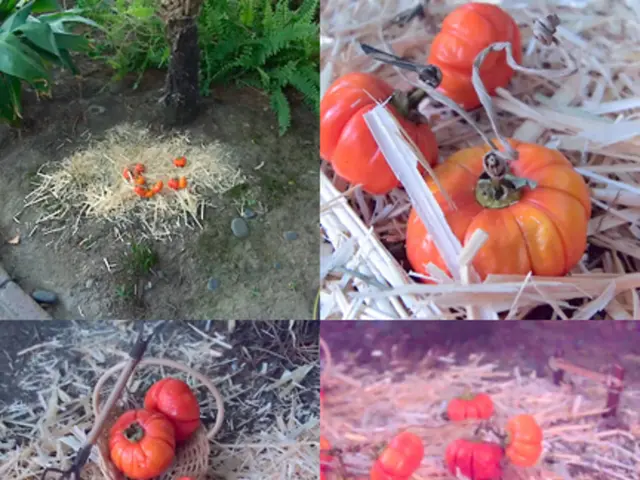Irrigating Alcea Rosea (Hollyhocks): Guidelines on Frequency and Method of Watering
Hollyhocks: A Guide to Watering for Optimal Growth
Hollyhocks, tall and beautiful flowering plants often found in cottage gardens and mixed beds, require consistent and regular watering to thrive, especially during their active growing phase and dry spells.
Watering Basics
When hollyhocks are young, watering daily may be necessary, particularly depending on temperature and soil type. As the roots grow longer, watering frequency can be reduced. To check if hollyhocks need watering, press an inch (2.5cm) into the soil with your finger. Dry soil indicates a need for watering.
It's crucial to keep the soil moist but not waterlogged. Watering from below, without wetting the plant's leaves, is important for preventing fungal disease spread, including hollyhock rust.
Seasonal Watering Guidelines
- Spring/early growth: Keep soil consistently moist by watering deeply and regularly to support root establishment.
- Summer/peak growth and heat: Increase watering frequency, possibly daily during hot or dry periods, ensuring deep watering to reach roots.
- Fall: Gradually reduce watering as growth slows but maintain moisture if soil dries out.
- Winter: Hollyhocks are generally dormant; watering needs are minimal unless in a very dry climate.
Pot-Grown Hollyhocks
Hollyhocks grown in pots and containers require good drainage and consistent moisture. Experienced growers note an increased need for watering during summer. Mulch can help reduce the frequency of watering and suppress soil splashing onto hollyhock foliage.
Water Conservation
Slow watering allows for deeper penetration of the growing medium, conserving moisture. This can be done by hand using a watering can or through the use of drip irrigation and soaker hoses.
Climate Considerations
In regions receiving less than an inch (2.5cm) of water per week in summer, routine irrigation is essential for hollyhocks. In cooler climates that experience freezing temperatures, avoid hollyhock watering until conditions improve in spring.
Overwatering and Disease
Overwatering can cause the foliage of waterlogged hollyhocks to begin yellowing, leading to the development of root rot and other fungal diseases. To prevent this, it is important to monitor soil moisture regularly and adjust watering frequency based on temperature, rainfall, and soil conditions.
Expert Advice
Tonya Barnett, a gardener with 13 years of experience, has transformed her backyard into a cut flower garden and regularly shares her gardening journey on her YouTube channel. She emphasises the importance of consistent watering and proper drainage for healthy hollyhocks.
In conclusion, with the right watering practices, hollyhocks can be a beautiful addition to any garden. By following these guidelines and monitoring soil moisture regularly, you can ensure that your hollyhocks stay healthy and bloom beautifully.
Adhering to these guidelines, it's apparent that hollyhocks, not only in traditional cottage gardens but also home-and-garden settings, would benefit from a sensible watering regime that accommodates their growth phases while ensuring home-gardeners maintain a suitable balance between watering frequency and preventing overwatering to curb fungal diseases.
Another essential aspect of maintaining healthy hollyhocks is giving specific attention to pot-grown varieties. Similar to flower beds, these plants require efficient drainage, moisture control, and thoughtful watering techniques like slow watering to conserve resources and minimize the risk of overwatering.






